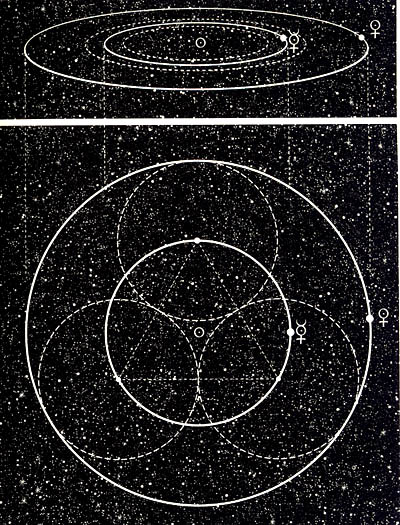メモ帳
思考と感覚
ときどき、質問者は自分の観念・信念はただの概念にすぎなかったと瞬時に理解した。彼はそういったものを捨てて、代わりに在に安らいだ。これが、私からしてみれば、マハラジの教えの真髄だ。彼は議論で確信させようとしなかった。代わりに、自分自身に議論させて、その人が真実だと感じる見解に立たせた。それからその人が持っているすべての概念の下にある基底の一瞥を与えることで、その見解を無効にさせたんだ。もし準備ができていれば、その人は自分の概念に対する執着を捨てて、その底流にあるものに安らぐ。そうでなければ大ポカをしたまま、マインドという地雷原にますます深入りしていく。一定数の人は理解した。ほかの、必死になって構造にしがみつこうとする人たちは、彼の教えをより深く理解するために用意された質問に何度も繰り返し帰っていった。
半田さんが主張するように、感覚は思考が生起させるものなのか?
ψ8の体験についてはそのとおり。
しかし言語を超す抽象度は直接体験しなくてはならないのでは?
PR
マウント富士
明日、蓮尾さんと富士山に登ることにした。
今朝は0合目から歩こうと言って盛り上がっていたんだけど、やっぱり帰りがキツそうだということで5合目までは車になった。
思いっきり体を使えそうで楽しみにしてた部分もあったんだけど、まっ、いっか。
下山してからはベクトルを変えず麓の湖に突っ込む予定。
つまり、バナナボートに振り落とされて湖にいくらか沈む予定だということれす。
これがとてつもなく楽しいことを先月知ったわれわれは幾度となく富士五湖周辺をうろうろし、そして必ずほかの遊休施設に魅せられ望みを叶えられていなかったのだ。
無題
[Between vyakta and avyakta] there is no difference. It is like light and daylight. The universe is full of light which you do not see; but the same light you see as daylight. And what the daylight reveals is the vyakti. The person is always the object, the witness is the subject, and their relation of mutual dependence is the reflection of their absolute identity. You imagine that they are distinct and separate states. They are not. They are the same consciousness at rest and in movement, each state conscious of the other. In chit, man knows God and God knows man. In chit, the man shapes the world and the world shapes man. Chit is the link, the bridge between extremes, the balancing and uniting factor in every experience. The totality of the perceived is what you call matter. The totality of all perceivers is what you call the universal mind. The identity of the two, manifesting itself as perceptibility and perceiving, harmony and intelligence, loveliness and loving, reasserts itself eternally.
Richard Rose
He must have presented quite an appearance in those days. He kept his head shaved, wore a goatee, and dressed entirely in black, including a black snap-brim fedora reminiscent of the gangsters of the day.

最近の投稿
カテゴリー
最古記事
リンク
思考と感覚
ときどき、質問者は自分の観念・信念はただの概念にすぎなかったと瞬時に理解した。彼はそういったものを捨てて、代わりに在に安らいだ。これが、私からしてみれば、マハラジの教えの真髄だ。彼は議論で確信させようとしなかった。代わりに、自分自身に議論させて、その人が真実だと感じる見解に立たせた。それからその人が持っているすべての概念の下にある基底の一瞥を与えることで、その見解を無効にさせたんだ。もし準備ができていれば、その人は自分の概念に対する執着を捨てて、その底流にあるものに安らぐ。そうでなければ大ポカをしたまま、マインドという地雷原にますます深入りしていく。一定数の人は理解した。ほかの、必死になって構造にしがみつこうとする人たちは、彼の教えをより深く理解するために用意された質問に何度も繰り返し帰っていった。
半田さんが主張するように、感覚は思考が生起させるものなのか?
ψ8の体験についてはそのとおり。
しかし言語を超す抽象度は直接体験しなくてはならないのでは?
半田さんが主張するように、感覚は思考が生起させるものなのか?
ψ8の体験についてはそのとおり。
しかし言語を超す抽象度は直接体験しなくてはならないのでは?
PR
マウント富士
明日、蓮尾さんと富士山に登ることにした。
今朝は0合目から歩こうと言って盛り上がっていたんだけど、やっぱり帰りがキツそうだということで5合目までは車になった。
思いっきり体を使えそうで楽しみにしてた部分もあったんだけど、まっ、いっか。
下山してからはベクトルを変えず麓の湖に突っ込む予定。
つまり、バナナボートに振り落とされて湖にいくらか沈む予定だということれす。
これがとてつもなく楽しいことを先月知ったわれわれは幾度となく富士五湖周辺をうろうろし、そして必ずほかの遊休施設に魅せられ望みを叶えられていなかったのだ。
今朝は0合目から歩こうと言って盛り上がっていたんだけど、やっぱり帰りがキツそうだということで5合目までは車になった。
思いっきり体を使えそうで楽しみにしてた部分もあったんだけど、まっ、いっか。
下山してからはベクトルを変えず麓の湖に突っ込む予定。
つまり、バナナボートに振り落とされて湖にいくらか沈む予定だということれす。
これがとてつもなく楽しいことを先月知ったわれわれは幾度となく富士五湖周辺をうろうろし、そして必ずほかの遊休施設に魅せられ望みを叶えられていなかったのだ。
無題
[Between vyakta and avyakta] there is no difference. It is like light and daylight. The universe is full of light which you do not see; but the same light you see as daylight. And what the daylight reveals is the vyakti. The person is always the object, the witness is the subject, and their relation of mutual dependence is the reflection of their absolute identity. You imagine that they are distinct and separate states. They are not. They are the same consciousness at rest and in movement, each state conscious of the other. In chit, man knows God and God knows man. In chit, the man shapes the world and the world shapes man. Chit is the link, the bridge between extremes, the balancing and uniting factor in every experience. The totality of the perceived is what you call matter. The totality of all perceivers is what you call the universal mind. The identity of the two, manifesting itself as perceptibility and perceiving, harmony and intelligence, loveliness and loving, reasserts itself eternally.
Richard Rose
He must have presented quite an appearance in those days. He kept his head shaved, wore a goatee, and dressed entirely in black, including a black snap-brim fedora reminiscent of the gangsters of the day.





